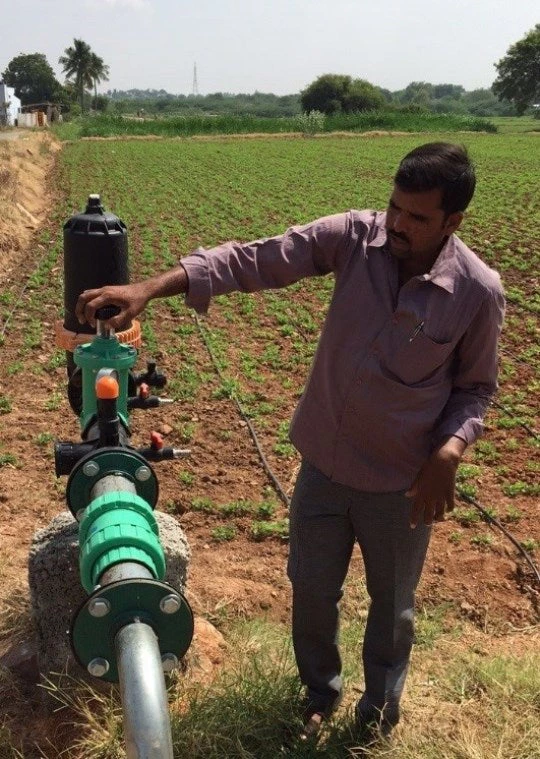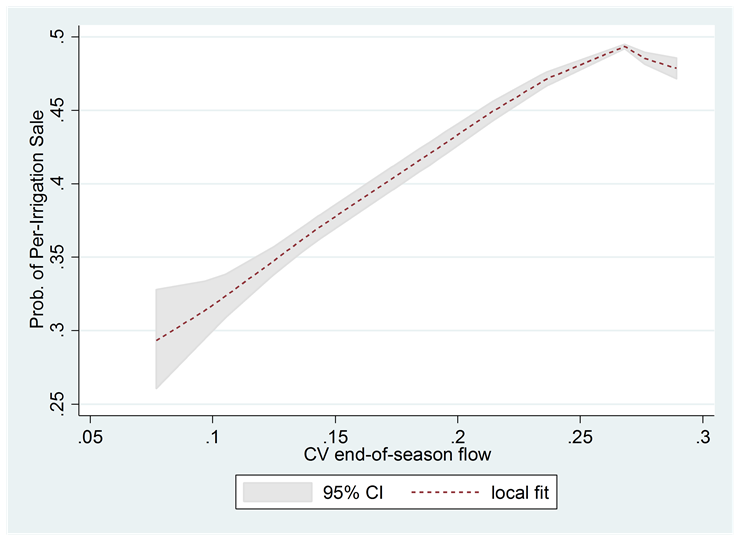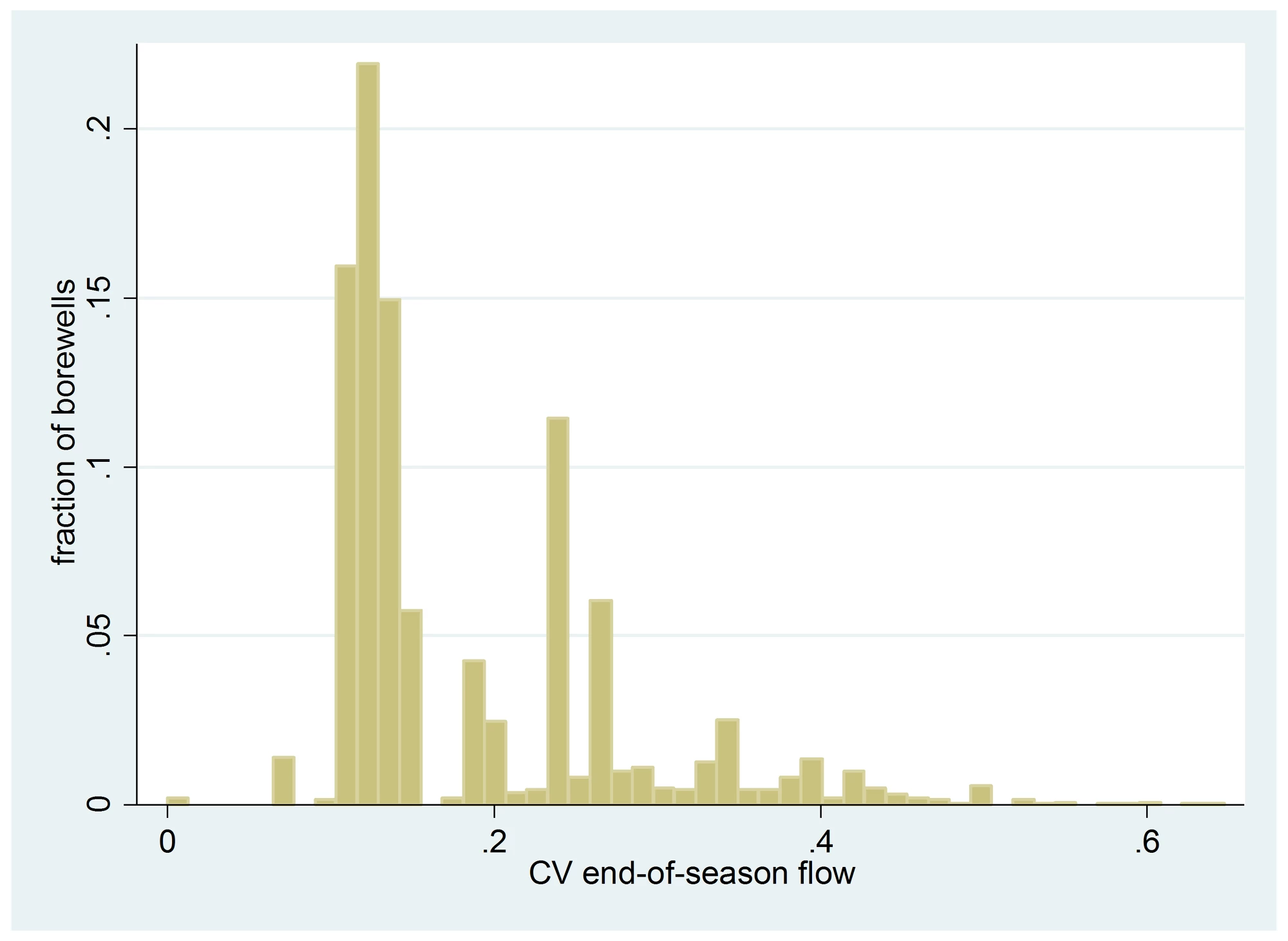During the dry season, N. S. Reddy, a farmer in Kadapa district of Andhra Pradesh, cultivates groundnut on two acres using water from his own borewell, which he runs for the six hours every day that his village gets electricity. His neighbor, J. R. Prasad, owning a borewell of similar capacity, fully cultivates his single acre of land, but also sells water to A. R. Murthy to grow sunflower. At the end of the season, Mr. Murthy gives Mr. Prasad 3000 Rupees as payment on his contract for irrigating this half acre. In a different village, a similar scenario plays out, but here the borewell owner, K. Chandra, sells M. S. Krishna five irrigations, one-at-a-time throughout the season, at 1000 Rupees apiece.
How do these scenarios differ and why should we care?
First, we should care because groundwater is a vital yet threatened resource in much of the semi-arid tropics, especially in India, by far the world’s largest user (as I pointed out in a Policy Research Talk last year). We need to better understand how farmers allocate groundwater and whether they do so efficiently. Also, as a practical matter, India is now massively subsidizing drip and sprinkler irrigation under its National Mission on Micro Irrigation. To exploit the income-generating potential of water-saving technologies, small farmers like Messiers Reddy, Prasad and Chandra must expand water sales to neighboring cultivators; their ability to do so depends on the efficiency of groundwater markets.

Economists are trained to uncover distortions, the information, coordination, or commitment problems that lead to market failure. If the flow of groundwater from a borewell over the entire course of the dry season were known with certainty, it is hard to see a difference between the two selling scenarios described above: Mr. Krishna would know exactly how many hours of irrigation he needs for his sunflower, as would his irrigation supplier, Mr. Chandra, for his groundnut. Since neither the quantity nor the value of irrigation to buyer or seller would change over the season, Krishna and Chandra should be equally content with a lump-sum pre-arranged contract along the lines of Murthy and Prasad’s.
Uncertainty changes everything
If his borewell flow drops off unexpectedly late in the season, Prasad bears the supply shock. Inasmuch as he has committed to fully irrigate Murthy’s sunflower field, his groundnut crop must suffer. By contrast, in their per-irrigation arrangement, Krishna and Chandra both partly bear the shock, through adjustment in the groundwater price and quantity. The upside of the seasonal contract, however, is that it avoids the “hold-up” problem. Murthy plants more sunflower than he otherwise would because he knows that, once he has committed his crop, he will not lose his power to bargain for a good price of irrigation—in fact, price and quantity are fixed in advance. This commitment benefits the seller, Prasad, as well because it expands his market.
Each selling arrangement, in other words, has its advantages and disadvantages
In technical terms, there is a tradeoff between ex-post inefficiency (seasonal contract) and ex-ante inefficiency (per-irrigation contract). And, this tradeoff depends on the extent of uncertainty: more uncertainty favors per-irrigation over seasonal sales.
What is the source of groundwater supply uncertainty?
In the hard-rock zone of peninsular India, there is an annual cycle of monsoonal replenishment of the aquifers and subsequent draw-down as millions of borewells pump out groundwater for dry season irrigation. Depending on local conditions, however, a borewell may run partially or totally dry in the midst of the growing season, and do so unexpectedly, leaving crops vulnerable to water stress.
In a survey covering around 2400 borewells across six districts of Andhra Pradesh and Telangana conducted in 2012-13, farmers were asked to assess the probability distribution of end-of-season well-flow. Only a handful of well-owners report a zero coefficient of variation (CV) and for many the uncertainty is substantial (see histogram). Moreover, this uncertainty affects behavior, just as theory suggests: Given that a groundwater sale occurs, the odds of choosing a per-irrigation contract over a seasonal contract is increasing in uncertainty.
So, what does all this have to do with drip irrigation?
In a new paper, Xavier Giné and I estimate an economic model of irrigation decisions under groundwater supply uncertainty, which incorporates the two types of contracts just discussed. The estimates allow us to quantify both the magnitude of the groundwater market distortion as well as the economic returns to water-saving technologies, like drip. We find that distortions reduce the returns to drip irrigation by around 6% on average, but more so for owners of small plots. These are the farmers that would have the greatest need to sell excess water once their irrigation efficiency is improved. Thus, land fragmentation, which gives rise to groundwater markets in the first place, along with uncertainty, which creates a distortion, may conspire to limit the adoption of water-saving technologies.



Join the Conversation